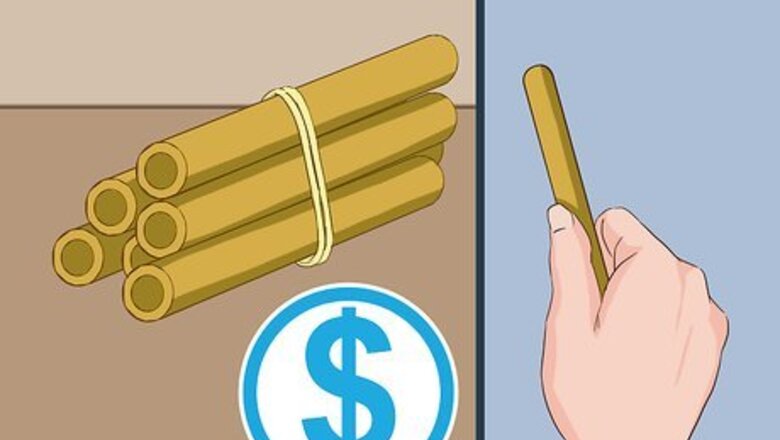
views
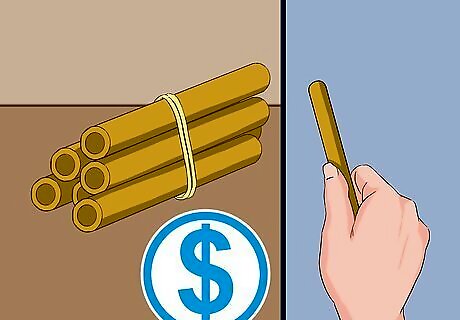
Purchase gouged cane from your music store. Cane can be purchased 1 of 2 ways; either gouged or shaped and tubed. For the purpose of this article, we will start with gouged cane and shape it.
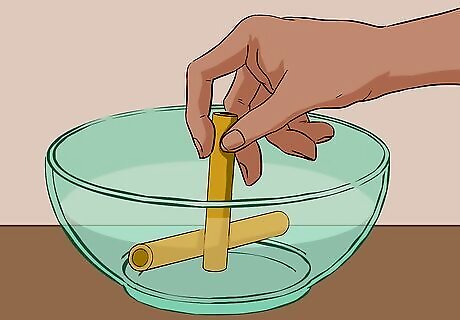
Place the gouged cane in warm water and let it soak for 30 minutes. This allows the cane to become more pliable for shaping.
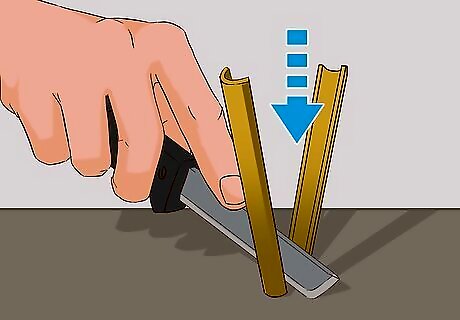
Use a wedging knife and draw it down through the cane on both sides, following the contour of the shaping tool. This allows the cane to lay flush when inserted in the shaping tool.
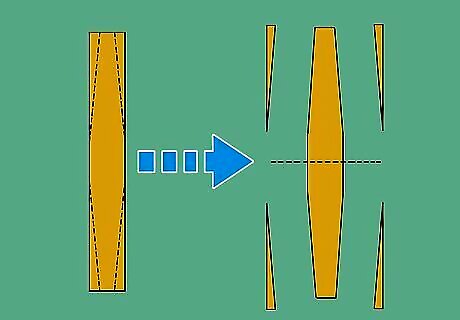
Slightly narrow the width of each end of the cane.
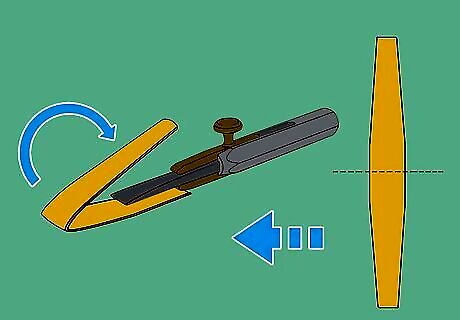
Shape the cane by folding into the shaper and clamping it securely.
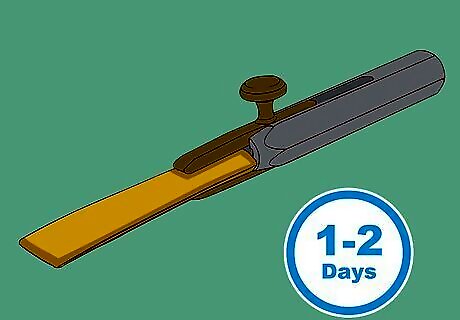
Allow the reed to dry in the shaper. This usually takes a day or 2 and will allow the reed to hold its proper form.
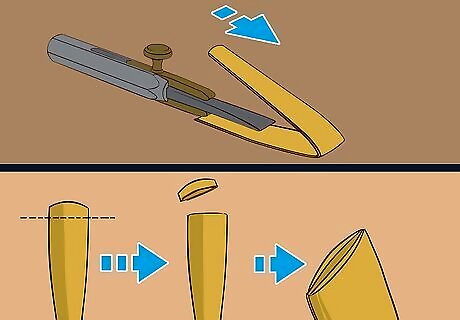
Remove reed from the shaper tool. Your original long piece of cane will now be doubled over on itself, with one end a little bit narrower than the folded end. The reed will look like a pipe or tube that has been split in half, but joined and flat at one end and open and rounded at the other.
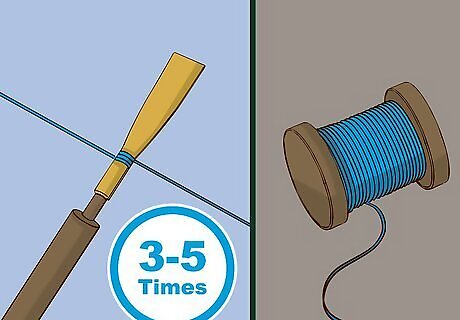
Pass an arm's length of nylon string (attached to the spool) through beeswax by pulling it across a piece of the solid wax 3-5 times
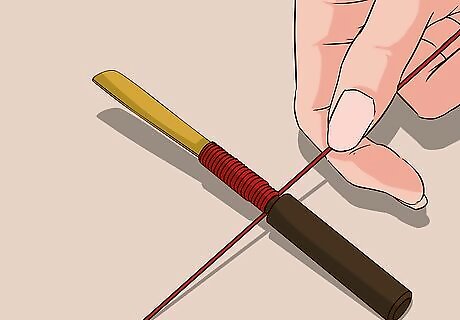
Tie the cane to the staple with the nylon string. The length of the staple is usually 1 7/8 inches (47 mm). Leave 3/4 of an inch (18 mm) of cane exposed above the staple tool and wrap the rest of the reed to the staple. This results in a 3-inch (75mm) assembly. Wrap nylon around the reed at the end of the staple as tight as possible. The end product must be airtight. You will be winding the nylon in successive rows, much like a coil of string or wire, with no spaces between the coils.
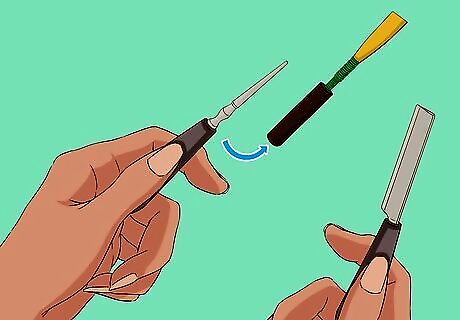
Scrape the reed. Scraping is probably the most important part of making your double reed. The easiest way to scrape is to place the reed on a mandrel for easy handling. Scrape the tip in an upward motion (toward the folded tip). Scrape the reed several times on each side from one corner to the other. Work the reed in this manner until you feel your reed is scraped to your needs. This might take some trial and error. Make sure to keep the reed moist for easier scraping. Dip it in a cup of water now and then for a few seconds.
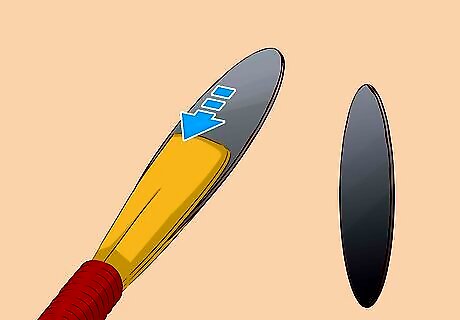
Place a plaque between the a sections of reed and move upward to slice the reed into 2 separate parts. Leave the plaque in place to support the reed as you continue on to the rest of the scraping process.
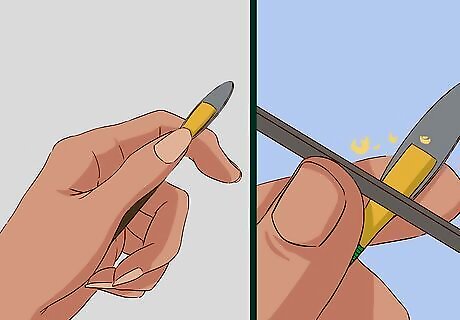
Scrape out the heart of the reed a 1/2 inch (12mm) below the scraped tip.
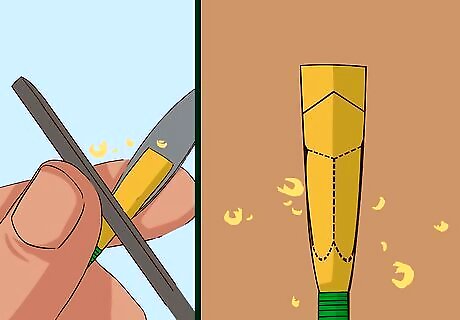
Scrape the windows of the reed. The windows are on either side of the spine of the reed. Each window will extend to the edge, or rail, of the reed. Leave wood on the spine.
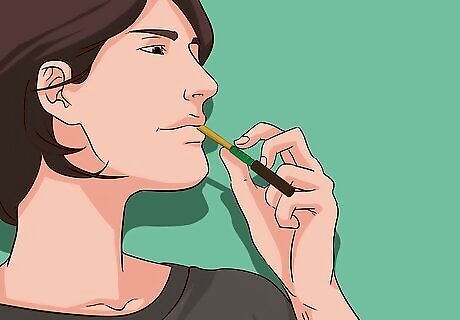
"Crow" the reed. Crowing the reed is a process to check the basic sound of the reed without placing it in the instrument. Place the reed in your mouth, with your lips on the coiled thread, and blow. The sound you hear should be much like that of a crow.




















Comments
0 comment